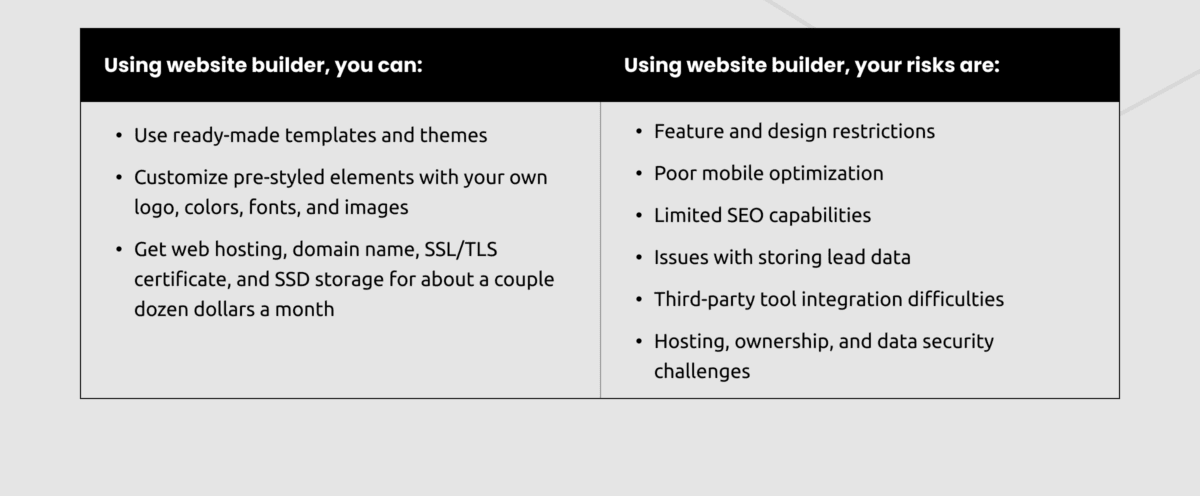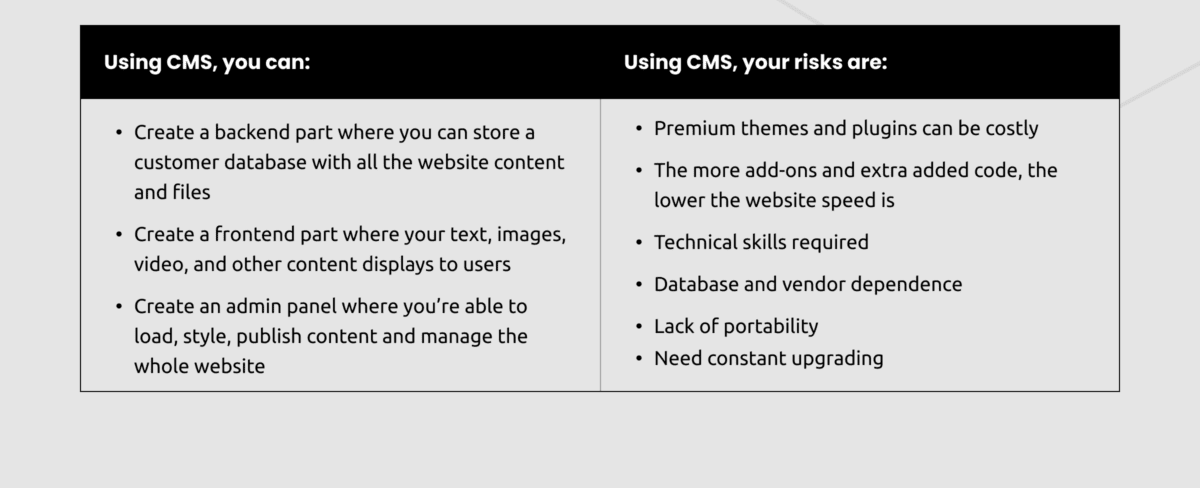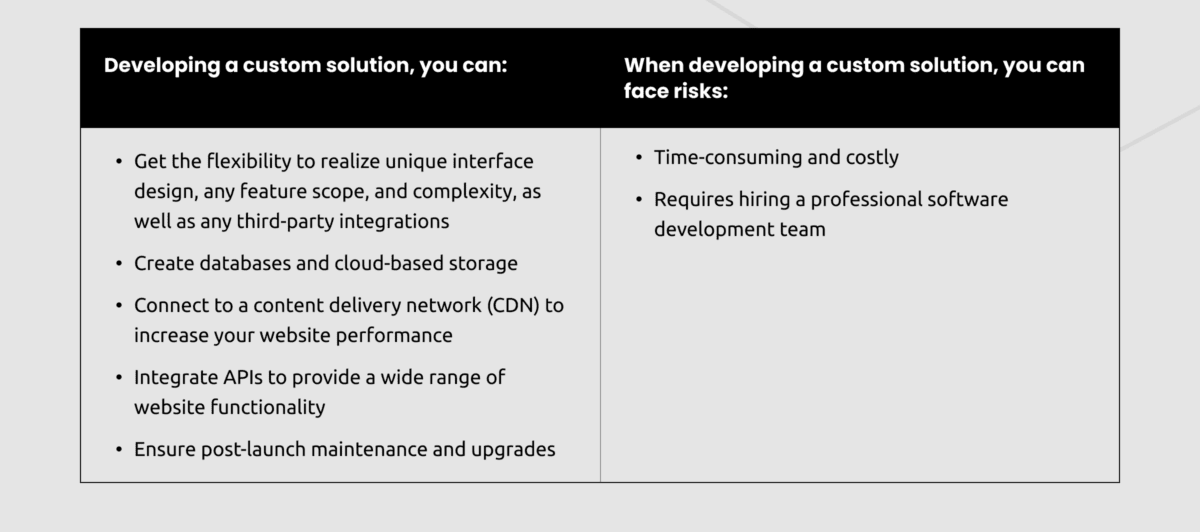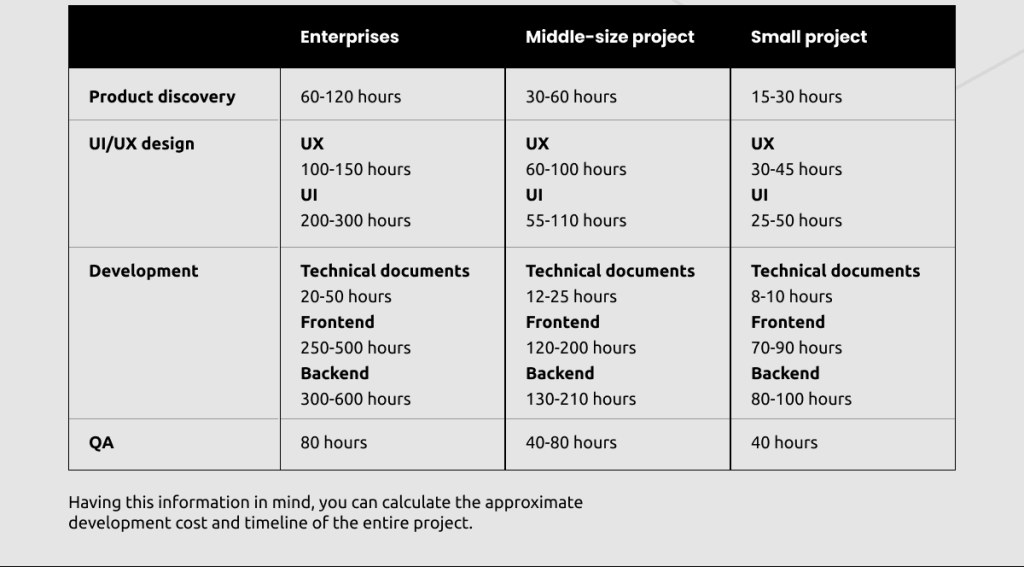Content
A massive variety of online services are growing at a high pace to meet customers’ increasing demand worldwide. Overloaded with daily activities, people prefer online services to offline services to save time and maximize convenience as much as possible. Such a trend is a powerful incentive for many businesses to adopt online delivery services.
However, in a highly competitive landscape of delivery services, businesses look for proven ways how to make a delivery website profitable and lead-generating. With solid experience in this field, RewiSoft is happy to share a personalized approach to building delivery websites based on a real case from our portfolio.
In this blog post, we cover all the basics, costs, and tech nuances you need to know to get started with creating an extremely demandable delivery website that fits your unique business model and attracts more customers.
Read Also: How Much Does It Cost To Outsource Website Development?
Why create a delivery service website?
A traditional service/product delivery model entails a customer placing an order for a product or service and waiting for the courier to deliver the order to the door. Customers can order many types of goods and services online: food, beauty items, household goods, clothing, electronics, groceries, etc. That gives a solid boost for brainstorming numerous website delivery ideas to suit your business model best.
Important to note, the delivery service market’s growth is driven by demand for fast and quality service, online payments, increased utilization of mobile devices (e.g., mobile and online ordering demand already reached 286% three years ago), and global influences (like Covid-19). To put more statistics, according to the report on food order delivery, over 84% of today’s consumers order food delivery or takeout, and 57% – order delivery and takeout once or twice a week. These factors place an on-demand service delivery on top of the list of trending website ideas, giving a successful start to the majority of new startups.
However, while the market is overwhelmed with competitors, the reasons to create a delivery website are still worth your investments, time, and effort. The most rewarding benefits of online delivery services to your business are:
- Acquiring new customers. Going online opens many opportunities to reach a broader audience to sell your products and services.
- Increased revenue streams. Gaining more customers is equivalent to boosted sales and increased revenue streams.
- Collecting analytics. A functioning delivery website will help you to gather all critical information about your customers and their preferences. Once analyzed, you can use this data to personalize user experience and drive successful marketing campaigns.
- Better online visibility. The most simple and profitable way to drive brand awareness and online visibility are to create a delivery service website. In addition to order management, you can also inform your customers about discounts, special offers, new and top-selling products and build brand trust.
Find out how much it costs!
Top trends on how to make a delivery website top-rated
Considering to make a delivery website, you should first monitor top-performing trends in your industry to create a competitive and user-friendly delivery website to entice numerous customers. Let’s analyze the most popular trends that our team follows.
Read Also: End-to-end Software Development: Process, Benefits, and Trends
Multi-language interface and support
To create a customer-oriented and user-friendly delivery website, our team implements a multi-language interface and support to go global. Depending on the location of your target audience and the region where you run your business, adding several languages will allow more customers to interact with your website and enjoy the experience with your website. This technique kills two birds with one stone for your business: reaching a wider audience and increasing sales.
Real-time chat
AI-powered real-time chat is another trendy approach to attract customers to your delivery website. By implementing a chat window on your website, you will provide your customers with the ability to ask questions and get instant answers. The AI-powered chatbot automates routine tasks such as gathering feedback, answering frequently asked questions, and engaging sales specialists when needed.
Loyalty program
For any growing business, it is essential not only to attract new customers but also to keep them loyal to your brand. One of the most powerful strategies to win your customer’s loyalty and maximize user retention is to create loyalty programs. Moreover, you should allow users to use the rewards gained from a loyalty program while ordering online. Loyalty program integration can become valuable to your long-term win-win marketing strategy.
For example, by implementing a loyalty program, you can guide your customers through menu items and attract their attention to particular ones or ask for email in exchange for a discount code.
Read also: How to Create a Loyalty Program App? Rewards App Development Guide
Robotic delivery
Drones and self-driving cars are other rapidly growing trends that allow companies to deliver orders. For example, Zomato is one of the first distribution companies to create its drone fleet to deliver food orders by drone. Also, according to Statista, the market of self-driving cars will exceed 37 billion U.S. dollars by the end of 2023. These trends are further evidence that the service delivery market is about to change the online shopping experience for customers more, encouraging businesses to keep up with the times.
How to make a delivery website in 8 steps?
To understand how to make a delivery website, you should have clarity of the overall development workflow to minimize project risks and avoid business failures before stepping into development. Let’s dive deeper into each stage to get a clear picture of delivery website development.


Step 1. Select the type of delivery platform to build
There are several ways to get a delivery website: buy a ready-made solution or invest in custom delivery platform development.
Having solid development experience and knowledge of business processes, we recommend creating a custom delivery website. The reasons are simple: to make your business competitive and profitable, you should focus on your customers. When analyzing modern users, you can understand that customers want personalization, speed, convenience, and robust features. All this is achievable through creating a custom delivery website based on your unique requirements and objectives.


Step 2. Define your niche and target audience
To build a delivery website that is selling and profitable, you will need to define your niche, analyze your target audience and create a unique value proposition (UVP). That will set you apart from competitors and help to attract users. When you define what region you want to cover, what goods to deliver, and what your target audience needs, you can draft an appropriate value proposition and understand how to market your product with features your target audience expects from your website.
Step 3. Conduct market research
Prior to development, it’s crucial to conduct in-depth market research. It will help you understand the service delivery market trends and local market specifics, analyze competitors’ strengths and weaknesses, and understand the needs and preferences of your target audience. During this step, we collect all relevant information about similar top players on the market to identify what they offer, what they lack, what works, and what doesn’t.
For example, in our case, our customers work in the food industry. We needed to conduct in-depth market research to analyze the main competitors in the local market and explore the best way for people to order food from supermarkets in Germany and track orders easily.
Step 4. Choose a revenue generation model
You should clarify how to generate revenue to deploy a profitable delivery website. This step is paramount before development since the website architecture, payment methods, and design will largely depend on the chosen monetization model.
The most common monetization models for delivery services are:
- Delivery charges. Customers and suppliers communicate through online delivery services. In this model, you can provide your delivery website to numerous offline stores and bring goods to customers for a delivery fee.
- Commission-based model. You define a commission percentage based on orders’ details in this model. However, the amount of the commission may vary depending on the level of the goods supplier, the average income, the number of positive reviews, and other criteria.
- Advertising. For a fee, the apps can advertise businesses to those who use them. For example, food delivery apps can promote restaurants by showing them at the top of search results for a specific time and attracting more people than their competitors.
- Freemium model. Under the freemium model, you can add particular functionalities to your delivery website and charge for premium functionality.
Step 5. Get your software development team together
Building a delivery website from scratch can be time-consuming and costly unless you hire a dedicated development team with relevant experience. This group will include business analysts (if required), UI/UX designers, front-end and back-end developers, and QA engineers who work under a project manager and collaborate with your in-house staff.
If you want to delegate your entire project development from A to Z, outsource delivery website development to a third-party vendor. We recommend outsourcing delivery website development to agencies rather than developing the website in-house or handing over the work to freelancers. By hiring remote IT specialists from reputable agencies, you have better control over the quality of work and ensure the level of confidentiality and corporate data protection.
At RewiSoft, we have vast experience working with early startups and mature businesses across different industries, including online delivery services. We have a broad market picture to help you validate your business idea and take care of the technical implementation of your delivery website.
Contact us for a free consultation from our professional experts!
Read more here: How to Build a Software Development Team in 2023?
Step 6. Design your delivery website
The design process is often divided into multiple stages to understand what is needed to deliver an excellent user experience to your target audience. Our designers are actively engaged in the product discovery stage to market research the market, study competitors, and target audiences to uncover what best works for them.
The design process at RewiSoft works as follows: once all project specifications are ready, our design team can start creating mockups for your future delivery website. We start visualizing the main app features in the identified user scenarios and plan convenient journeys for all app personas. We create UX wireframes and prototypes to visualize how the app looks and performs. After that, we test several options on users, make improvements and agree on design options with all project stakeholders.
Considering how to make a delivery website, you also need to consider how to make the platform design that converts. Since customers prefer a simple and clean design, make it a rule. Intuitive navigation will allow customers to find the needed section without effort and make an order for delivery.
Our design team follows the best industry practices and time-tested UI/UX design techniques to build a delivery website that meets your vision and company style.
Step 7. Develop a delivery website
Once all the design work is done, designers pass the project to developers. This step includes developing a server side and client side. We divide the scope of development work into sprints that last 2 or 4 weeks and assign (2+ front-end programmers and architects) to start translating the UI design elements into a functioning user side and 1-2 back-enders implement the application’s server side, APIs, and business logic.
In this process, RewiSoft’s team follows the best development practices, including the CI/CD approach for automatic delivery of new builds, testing, and safe deployment, regular code reviews, code quality control, regular communication, and reporting to stay on the same page with all project stakeholders.
Step 8. Test, release, and maintain
To ensure you’ll get a bug-free website, our QA engineers run different tests during and after the website development:
- Code checking
- Accessibility testing
- Performance testing
- Usability testing
- Beta-testing by real users
- Security testing
- Cross-browser compatibility testing
- Smoke testing (after new fixes are made)
Then, we put the results into bug reports and send them to programmers if any reworks and fixes are needed. Once the functionality is fine-tuned, we launch the product to the target audience, collect feedback and implement new functionalities or updates if needed.
Hope the above guide helped you understand how to make a delivery website risk-free. If any questions left, contact us.
What tech aspects to consider to create a delivery website?
In a delivery website development process, you may face multiple issues regarding what type of database to use, what tech stack to choose, what platform to build your website on, and how to ensure a proper level of security. The following tips from our team may come in handy.
Tech stack
We know how to make a delivery website based on the most efficient and powerful technologies and tools. For delivery website development, we use such tech stack:
- Frontend development: React + Typescript
- Backend development: Node.js, Java
- Cloud: AWS, Microsoft Azure, Google Cloud
- Payment gateway: Stripe, Braintree, PayPal
- Database: MongoDB, MySQL, PostgreSQL
- Messaging and notifications: Twilio, PubNub
- CMS: Contentful
Development options
To choose a go-to development option to fit the specifics of your business, you should first analyze the pros and cons of each development option. You can create a delivery service website in three ways: using a website builder, a content management system (CMS), or developing it from scratch.
1. Website builders


2. Content management system (CMS)


3. Custom-built solution


As you can see, the choice of development option depends on your unique business scenario, available resources, and plans for the future. In any case, building a custom delivery website is the way to go if you want to scale and get a large number of loyal customers.
Cloud & security
RewiSoft implements the best security practices to prevent data breaches and cybersecurity threats and maintains compliance with all relevant industry regulations, including GDPR, PCI, GLBA, WCAG, SOX, and international web standards.
Some of the best practices we follow are:
- End-to-end data encryption
- Multi-factor authentication protection
- Full compliance with all local regulatory standards
- SSL and AES-256 encryption
- Automatic backup functionality to prevent data losses and corruption
Build a delivery website: Key Features for Customers
Selecting the features for your future delivery website is crucial since it will have a significant impact on usability. In most cases, the website needs to be customized for three user roles: customers, couriers, and admins. Let’s start with analyzing the list of key features for customers.


Onboarding and profile creation
Users should quickly get acquainted with your delivery service and create a profile in a few clicks. Integrating such registration options as email and password or phone number and password is better. Another good practice is incorporating sign-up via Facebook or Google in addition to the standard option. The simplest fields for profiles are name, delivery address, phone number, email, and payment option.
Order and home screen
The customer should see what products they added to the cart, how much they need to pay, and where to find the order form to enter the necessary data. On the home screen, users should be able to access product categories, services, contacts, search bar, company info, and a chat with the courier. Also, keeping an order history is good so customers can repeat orders instantly.
Online payments
Integrating payment gateways are essential when building delivery websites. Your website should accept Google Pay, Apple Pay, PayPal, and credit card payments based on the target audience location. Here, you should also pay specific attention to ensure proper security by integrating PayPal, Stripe, and Braintree or applying third-party services like MasterCard, Visa, or American Express. These payment solutions have SDKs that simplify your developers’ work and ensure secure transactions.
Search and categories
All menu items should be filtered by type, have a detailed description, and be accompanied by high-quality images and product photos. You will need to add a flexible search system to allow users to filter the items by product, price, ratings, location, delivery time, etc. This approach will help you to create a user-friendly delivery website.
Notifications
Customers should get notifications about the status of their orders throughout the entire delivery process, from the moment it’s accepted to the final delivery. A web notification or short text will be enough.
Order tracking
To enhance service-customer relationships, it’s vital to implement an order tracking option that displays order statuses on the screen (e,g., order accepted, preparing, handed to the courier, on its way, delivered). Or, if you’re developing a mobile delivery app, you can integrate a map or real-time monitoring system so couriers can track the customer’s location and vice versa.
Ratings and reviews
The ratings and reviews block will help you to understand the quality of the delivery services provided to your customers. Besides, it will help new customers choose a particular service or product wisely based on the reviews from previous customers.
Create a delivery website: Key Features for Couriers
Below, we share the list of the key features for couriers.


Personal profile
To make the delivery website available for couriers, you should allow them to sign in and create a personal profile (using email and phone number). To verify couriers, websites for couriers typically ask for the following information:
- Name, phone number, email
- ID card
- Driver’s license (if they’re going to use a car)
- Privacy Policy Agreement signing
- Medical handbook and others
Maps & navigation
Integrating maps and navigation into the courier’s interface will assist them in delivering products and goods. By doing so, you should ensure the in-built navigator works precisely and shows the fastest routes to let couriers deliver orders as quickly as possible. In addition, it’s a good practice to build a mobile version for couriers to let them use your delivery platform on the go.
Orders
Couriers should be able to look through the order details, like delivery address, time, order size, etc. With all information about the order, couriers can quickly accept or refuse them. Couriers should also be able to access previous orders to double-check whether they have attached the receipt and similar.
Chat
It’s better to integrate a chat feature into your delivery website to let couriers interact with and manage users’ requests effectively. In addition, they need to see user reviews and ratings that customers leave after completing an order to improve their work.
Create a delivery website: Key Features for Admin Panel
Below, we share the list of the key features for the admin panel.


Analytics dashboard
An admin dashboard should offer a bunch of valuable features for management. The analytics dashboard section usually includes such information:
- The overall revenue
- The overall number of products sold per day/week/month
- The revenue brought from each partner
- The number of orders
- The costs for couriers’ payments
- Ratings and reviews
Also, it’s easier to work with infographics than just numbers when analyzing. So, put data visualization first place when creating a delivery website.
Customers management
Your delivery website should let your admin team manage customers. Authorized administrators should be able to edit, ban or delete users (e.g., if they notice malicious activity or damage your reputation on the market).
Couriers management
You might need to implement a bunch of functions to let your admins manage the couriers’ work. We want to list the main ones:
- Working hours tracking
- Payments transfers
- Route and working area management
- Tech and logistics specialists support
- Access to feedback and ratings
- Courier leaderboards to track who works better in terms of productivity
- Calendar management
Orders management
This section allows admins to add, edit, delete orders, change prices, or announce discounts. Order management should also reflect the number of orders, their statuses, customer payment options, and comments.
How to make a delivery website without mistakes?
Along with trends, innovations, and technologies that you plan to use to build a delivery website, you may encounter a number of mistakes that will cost you time, money, and effort. To avoid such a scenario right from the beginning, below we share the best practices to make a successful delivery website.
Create a responsive version or go mobile
A vast majority of customers today use mobile devices to make orders. Moreover, mobile apps are essential for courier-side and customer-side functionality, allowing customers and carriers to place quickly and track orders on the go.
Pay attention to SEO
Along with creating a delivery website, we pay attention to making it SEO-friendly. Your website should be filled with SEO elements like user-friendly URLs, manageable meta tags, image alt tags, etc., so the search engines will put your website at the top. So, when considering a web development partner to cooperate with, ensure they’re experienced in delivering SEO-friendly web solutions.
Prioritize high-quality and useful content
Another proven technique to minimize mistakes during delivery website development and empower your marketing on the go – is to provide high-quality media to improve user experience and host relevant content for your users to increase your website traffic and retention rate.
Add an engaging call to action
You will need to add an appealing call to action (CTA) to drive potential customers to make purchases. Your CTA should encourage customers to take action while allowing them to find what they’re looking for in a few clicks. So, put an eye-catching and clear CTA on your website to connect customers to your order form or product catalog. For example, “Subscribe now,” “Add to cart,” etc. A good CTA directly affects the conversion on the delivery website and future profits.
Tailor your website to the local environment
Customers’ preferences may vary in many delivery spheres depending on their location. The success of your delivery website depends on how well you can tailor your website to the local environment.
Add additional revenue sources
Adding additional revenue sources can become a lifesaver when the business grows. When you create a delivery service website, think of creating alternative revenue streams.
RewiSoft’s experience in creating a delivery service website
Our team has been developing software and multiple apps across leading industries for years. Creating a delivery website was among our latest projects. Our customers work in the food industry. The main requirement was to design and develop an online store platform to deliver all the necessary products from supermarkets to customers’ homes.
We carefully analyzed all business and technical requirements and identified the tasks that we needed to solve:
- Create an MVP version of the delivery platform from scratch
- Develop a user-friendly delivery website to provide an exceptional customer experience
- Implement an in-app intelligent tracking system
- Make the website responsive version to adapt the solution for mobile devices
The scope of features we’ve developed:
- Easy sign-in/sign up
- Product categories
- Subscription-based system
- Smart search system
- Well-structured cart
- Order history
- Couriers functionality
- Analytics dashboard
- Order tracking
As a result, we developed a feature-rich, customer-centered, and user-friendly online store platform that allows people to order food from supermarkets in Germany and track orders easily. Our design team launched a successful MVP version with a modern, easy-to-convert design that attracted many regular customers.
If you want to create an online delivery website from scratch or need professional consultation, you can contact RewiSoft’s experienced web developers to assist you in creating a delivery website!
How much does it cost to build a delivery website?
It’s difficult to understand the required budget and the number of specialists unless we know your project specifics and goals. However, the most influential factors for building a delivery website are:
- Project complexity and functionality scope
- The project deadlines
- The hourly rate of the team you hire
To give you a hint, we’ve estimated the approximate cost to build a delivery website depending on the region and project stage you need help with.


On average, it will cost about $30,000 to develop an MVP version of the delivery website. The rest will depend on your feature list and other unique requirements.
Considering an average time estimation for such a project, it can take 2-3 months to prepare a delivery website for the first release. If you need to hire with the minimum required team (one of each type of specialist), it will be closer to 4 months than 2.
Either way, we know how to make a delivery website to fit any budget and timeline expectations. Below you can also see RewiSoft’s timeline calculations based on project size and stage.


time
Cooperating with us, you will get a highly committed team to deliver the project according to the planned schedules. Adherence to Agile methodologies, streamlined development workflows, and proven experience in this area help us guarantee our customers a quick time to market with uncompromising product quality.
Key Takeaways
Delivery services are one of the most prospective fields for investments. A good-looking, responsive, and user-friendly delivery website will help you stay afloat in today’s competitive market, drive more sales and strengthen your brand reputation.
So, by choosing RewiSoft as your delivery website development provider, you will get the following:
- Profound experience in various domains, including media, e-commerce, healthcare, FinTech, Edtech, etc.
- Expertise in the web design and development of various technical complexity, size, and industry focus.
- Hands-on experience with delivery website development.
- Highly committed full-time or part-time development team with all required specialists involved (PMs, BAs, UI/UX designers, developers, QA specialists, Tech Leads, etc.)
- On-demand services: from web development from scratch to modernization of legacy and outdated software.
- Flexible hiring and pricing models ( dedicated team, fixed price, and time & material).
If you are looking for a team to build a delivery website or advise on the best strategy for your business, please tell us more about your project. Fill out the contact form, and our managers will contact you shortly.







